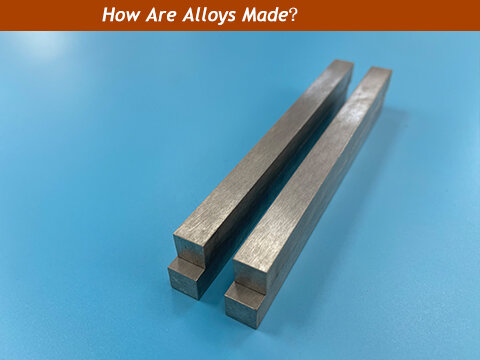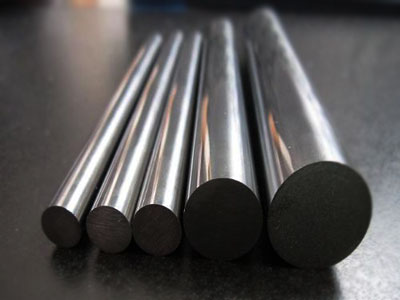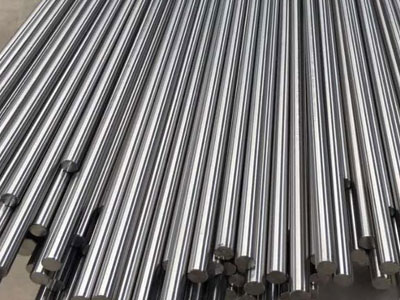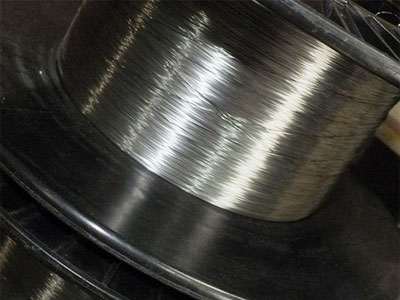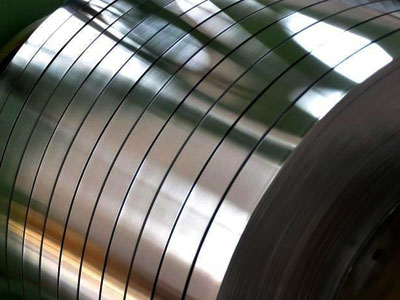Are you curious about how those shiny metal objects that we use in our daily lives are made? The answer lies in alloy production. It's a complex process that involves combining different raw materials to create a finished product with desirable properties. Whether it's for building structures, manufacturing machinery, or crafting jewelry, alloys are essential to many industries.
In this comprehensive guide, we'll take you through the different types of alloys, the raw materials used in their production, and the various processes involved. You'll learn about the crucial role of metallurgy, the science of metals, in alloy production. We'll also explore the challenges faced by alloy manufacturers and how they overcome them to ensure high-quality products. So, if you're interested in understanding the intricate world of alloy production, buckle up, and let's dive in!
Types of Alloys
Alloys are classified into two main types: ferrous and non-ferrous. Ferrous alloys are made of iron and other elements, while non-ferrous alloys are made of non-iron metals. Ferrous alloys are used in construction, machinery, and automotive industries, while non-ferrous alloys are commonly used in electrical, aerospace, and medical industries.
Ferrous alloys are further classified into two categories: cast iron and steel. Cast iron is made by melting iron and adding carbon, silicon, and other elements. It is brittle and cannot be forged, but it has excellent compression strength and is used to make engine blocks, pipes, and ornamental objects. Steel, on the other hand, is an alloy made of iron and carbon, with small amounts of other elements. It is more versatile than cast iron and can be used in many applications, including construction, tools, and transportation.
Non-ferrous alloys are made by combining metals such as copper, aluminum, magnesium, and titanium. Copper alloys are used in electrical wiring, plumbing, and coins. Aluminum alloys are commonly used in aircraft, automobiles, and packaging industries. Magnesium alloys are used in electronic devices, sporting goods, and aerospace industries. Titanium alloys are used in medical implants, aerospace, and military applications.
Why Are Alloys Used?
Alloys are used because they have better properties than pure metals. Pure metals are often too soft, brittle, or reactive for many applications. By combining different metals, alloys can have improved strength, hardness, resistance to corrosion, and other desirable properties. For example, steel is much stronger and harder than pure iron, making it suitable for construction and machinery. Copper alloys have better conductivity than pure copper, making them ideal for electrical wiring. Titanium alloys are biocompatible and have low density, making them suitable for medical implants.
In addition to improved properties, alloys are also cost-effective. By using cheaper metals and combining them with more expensive metals, manufacturers can create alloys with desirable properties at a lower cost than using pure metals. This is why alloys are widely used in many industries.
What Are Common Alloys?
There are many common alloys used in various industries, some of which are:
-
Brass: an alloy of copper and zinc, used in musical instruments, plumbing, and decorative objects.
-
Bronze: an alloy of copper and tin, used in sculpture, bearings, and electrical contacts.
-
Stainless steel: an alloy of iron, chromium, and nickel, used in cutlery, medical equipment, and construction.
-
Aluminum alloys: various alloys of aluminum, used in aircraft, automotive industry, and packaging.
-
Titanium alloys: various alloys of titanium, used in medical implants, aerospace, and military applications.
These are just a few examples of the many alloys used in different industries. Each alloy has unique properties that make it suitable for specific applications.
You can check more detials in another article: "What is an alloy".
Alloy Production Processes
Alloy production involves several processes, including melting, casting, forging, rolling, and extrusion. The process used depends on the type of alloy and the desired properties. Here are some common alloy production processes:
- Melting:
Raw materials are melted in a furnace at high temperatures. The molten metal is then poured into molds or cast into shapes.
- Casting:
Molten metal is poured into a mold and allowed to solidify. The mold is then removed, and the solid metal is shaped and finished.
- Forging:
The metal is heated and then hammered or pressed into the desired shape. This process improves the strength and durability of the metal.
- Rolling:
The metal is passed through a series of rollers to reduce its thickness and improve its strength and surface finish.
- Extrusion:
The metal is forced through a die to create a specific shape. This process is used to make tubes, rods, and other complex shapes.
Each of these processes requires specialized equipment and skilled operators. The quality of the finished product depends on the accuracy and precision of each process.
Alloy Quality Control
Alloy manufacturers must ensure that their products meet the required standards and specifications. Quality control is essential to ensure that the alloy has the desired properties and is suitable for its intended use. Here are some quality control measures used in alloy production:
Chemical analysis: The raw materials and finished alloy are analyzed to determine their composition and purity.
Mechanical testing: The alloy is tested for strength, hardness, and other mechanical properties.
Microstructure analysis: The alloy is examined under a microscope to determine its internal structure and any defects.
Non-destructive testing: Techniques such as X-rays and ultrasound are used to detect defects and flaws without damaging the alloy.
These quality control measures ensure that the alloy is of high quality and meets the required standards.
Alloy Testing and Analysis
To ensure that alloys have the desired properties, they are tested and analyzed using various methods. Here are some common techniques used in alloy testing and analysis:
-
Tensile testing:
The alloy is subjected to tension to determine its strength and ductility.
-
Hardness testing:
The alloy is tested for hardness using a variety of methods, including Brinell, Rockwell, and Vickers.
-
Corrosion testing:
The alloy is exposed to corrosive substances to determine its resistance to corrosion.
-
Spectroscopy:
The composition of the alloy is analyzed using techniques such as X-ray fluorescence and atomic absorption spectroscopy.
These tests and analyses help manufacturers ensure that their alloys have the desired properties and are suitable for their intended use.
Future of Alloy Production
The future of alloy production looks bright, with new materials and technologies being developed. One area of research is in lightweight alloys for use in transportation and aerospace industries. Another area is in the development of alloys with improved properties, such as strength, ductility, and corrosion resistance. Advances in metallurgy, materials science, and manufacturing technologies are driving these developments.
Conclusion
Alloy production is a complex process that involves combining different raw materials to create a finished product with desirable properties. Alloys are used in various industries and applications because they have better properties than pure metals and are cost-effective. The production of high-quality alloys requires specialized equipment, skilled operators, and quality control measures. The future of alloy production looks promising, with new materials and technologies being developed to meet the needs of different industries.

